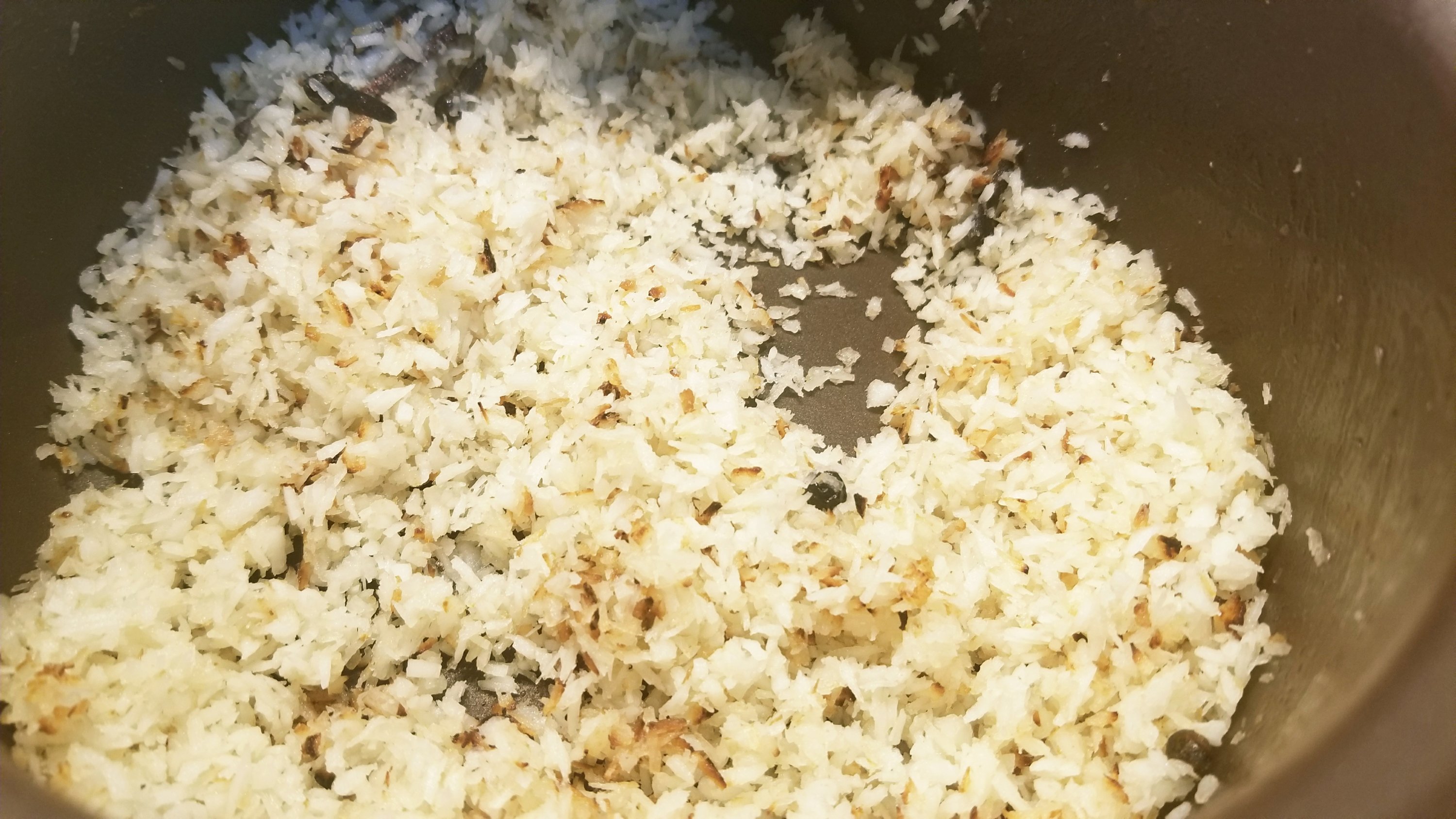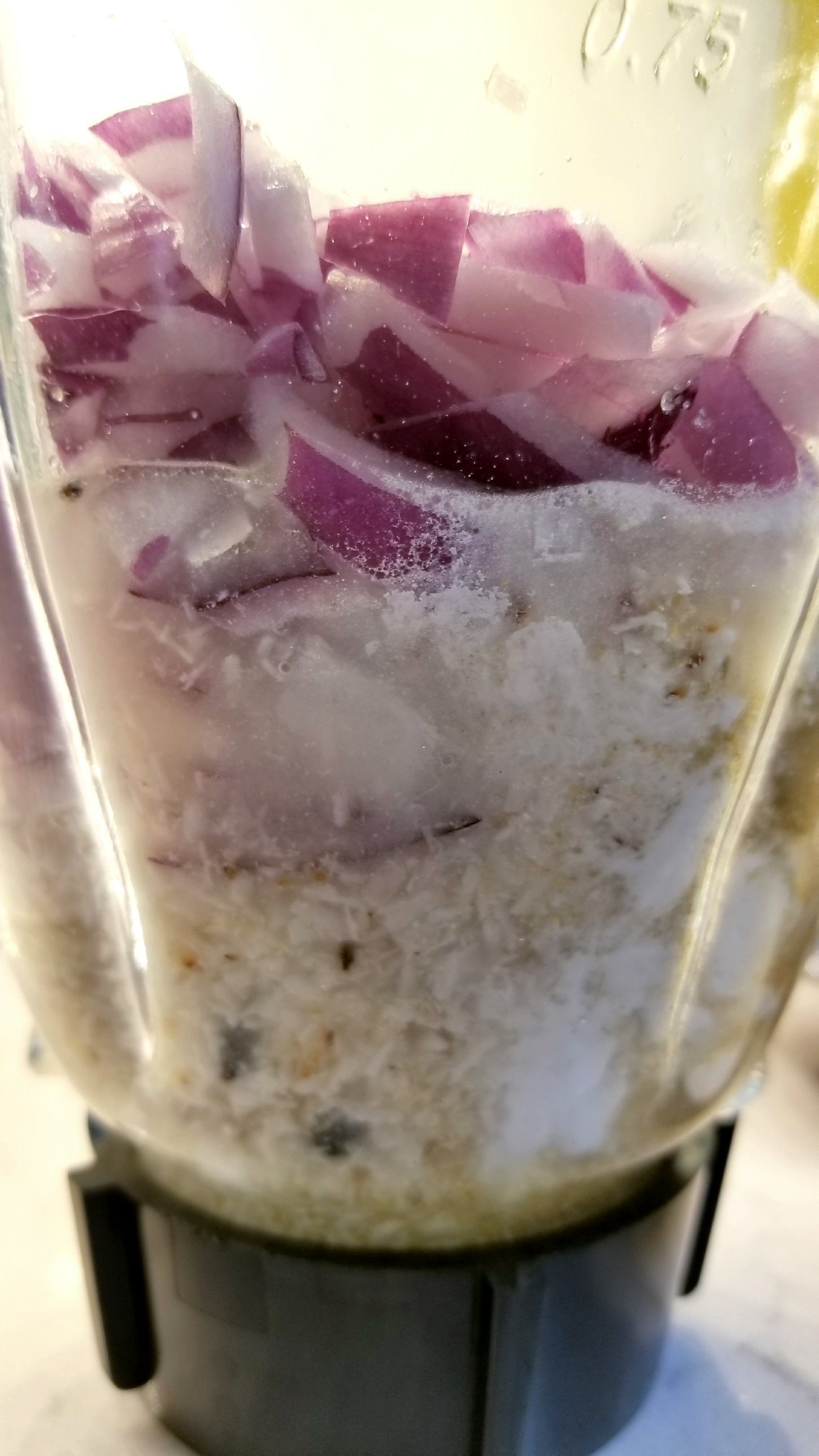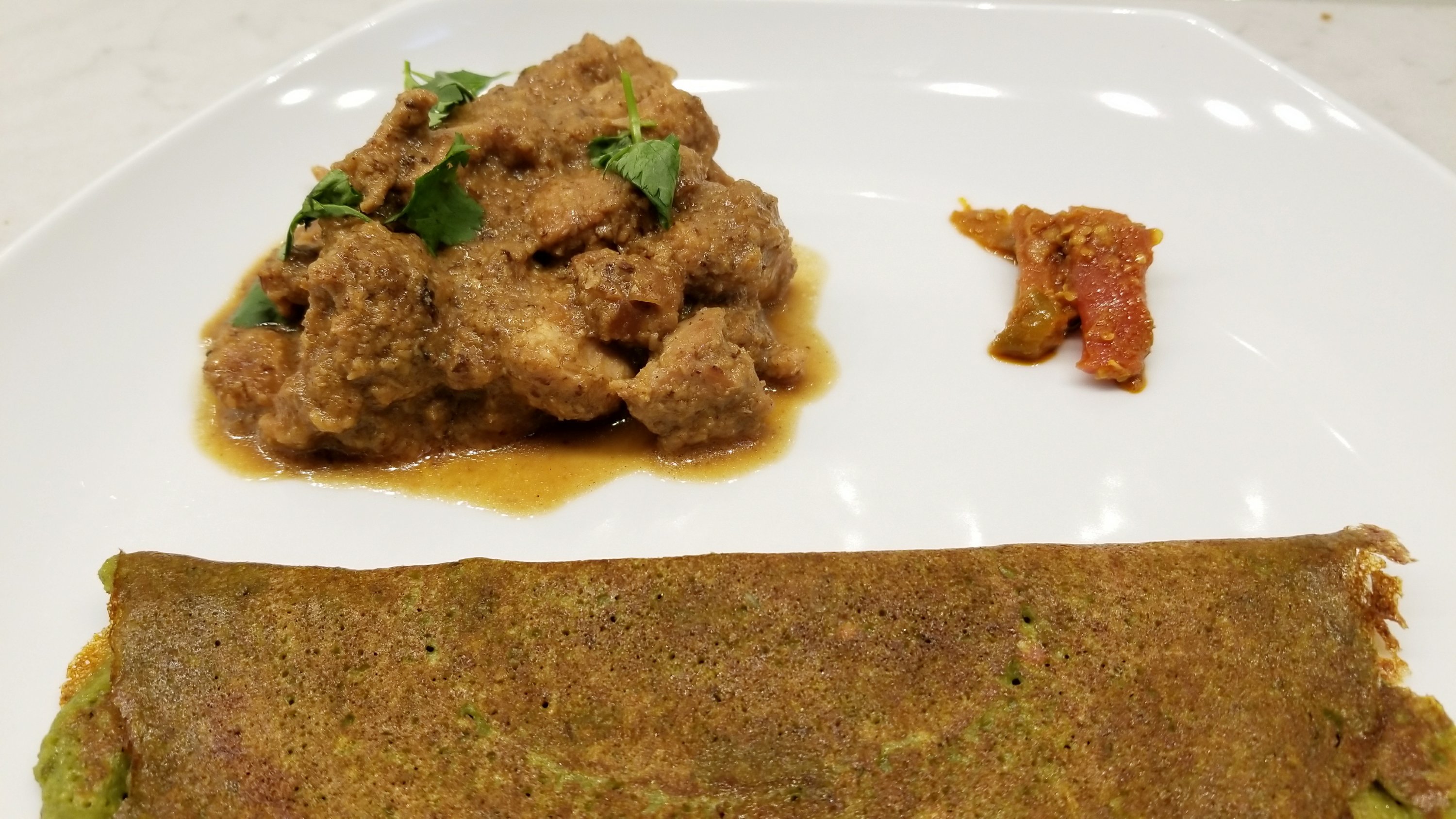Mangalorean Chicken Curry in IP
I like to vary my Indian cooking across different regions/states of India. Having eaten some delicious Mangalorean food cooked by my friend V, I decided I had to make this Mangalorean “Kori Gassi” (chicken curry) . The recipe comes from my favorite Indian recipe book: 660 Curries by Raghavan Iyer. I have listed my changes at the end of this post.
The recipe calls for 1 cup fresh shredded coconut which you toast along with 6 whole peppercorns, 2″ pc cinnamon stick & 4-5 cloves. Since I didn’t have fresh coconut, I used dehydrated (not sweetened!) coconut and reconstituted it for 30 minutes with warm water. It toasts up pretty nicely, giving out a nutty aroma. In keeping with my ongoing detox diet which makes an exception for ghee among dairy products, I cooked this recipe in ghee. I felt cooking it in coconut oil would make it a bit too coconutty.

The recipe also calls for adding salt, tamarind, mustard, fenugreek, cumin & coriander seeds to the shredded coconut, and then grinding it. I don’t have one of those $400 blenders, so I decided to powder my cumin, fenugreek, & coriander seeds before hand. This is a much more reliable method of making sure your spice paste is well blended.

About half of a large onions goes in raw into the blender to make the spice paste.

The other half of the onion gets browned with curry leaves.
Then add the meat to the pan, brown it while basting with the spice paste. When the meat is browned (and the coconut paste will brown too), deglaze the pan with minimal water, dump everything in the IP, and you’re ready to go! Cook on High Pressure for 12 minutes. You can release right away or wait for 10 minutes (I like to wait).
I didn’t cook any veggies that day, but I served the kori gassi with “pesarattu“, a crepe made out of mung beans. Pesarattu is so tasty and healthy! A dollop of achar (Indian spicy pickle) on the side, because I like a little kick in my food and had cut out all the chillis from the curry’s recipe for my kid’s sake.

Instant Pot changes: Use 1 cup of coconut milk instead of two, for 1.5 lbs chicken thighs.
If using the book, these are the changes I made besides the IP liquid quantity:
- Drop all but 1/2 dry red chilli. Or completely remove them all from recipe if you can’t tolerate any spice. It won’t reduce your enjoyment of the food.
- If your tamarind paste is not a strong concentrate, you will need more than the recipe calls for. I ended up using 2 tbsp of my tamarind paste.
- Grind your cumin & cilantro seeds in a spice grinder before adding to the spice paste mix. This will ensure better grinding.
- I based my recipe on the book’s Pork Gassi, which uses cinnamon sticks instead of the white poppy seeds in the chicken recipe. My gain, not loss, because I didn’t have white poppy seeds handy anyway.
Since I can’t reproduce Mr. Iyer’s recipe, I’m going to direct you to this alternate website for an online version of this recipe. You should be able to follow it along with the following adjustments to end up with the same delectable kori gassi.
- You can either use a cinnamon stick in Step 5 with the non-ground spices, or add 1 tbsp white poppy seeds to Step 2.
- After Step 6, do not add the entire coconut paste to pan. Instead, add the meat first and allow it to start browning, then spoon the paste over it slowly, basting as you go. This will allow the meat to brown and absorb the flavors at the same time.
- You can use tamarind paste (readily available in Indian stores) instead of pulp. I just add this to the blender mix.
- You can halve the quantity of grated coconut, and replace the water with 1 cup coconut milk.
- If you have Kashmiri Chillis you can use them to impart color without the heat.
- Once the meat is browned, move everything to the IP and cook. Everything will turn a lovely brown or a reddish brown, depending on whether you used the chillis.
Happy Cooking!
Recent Comments